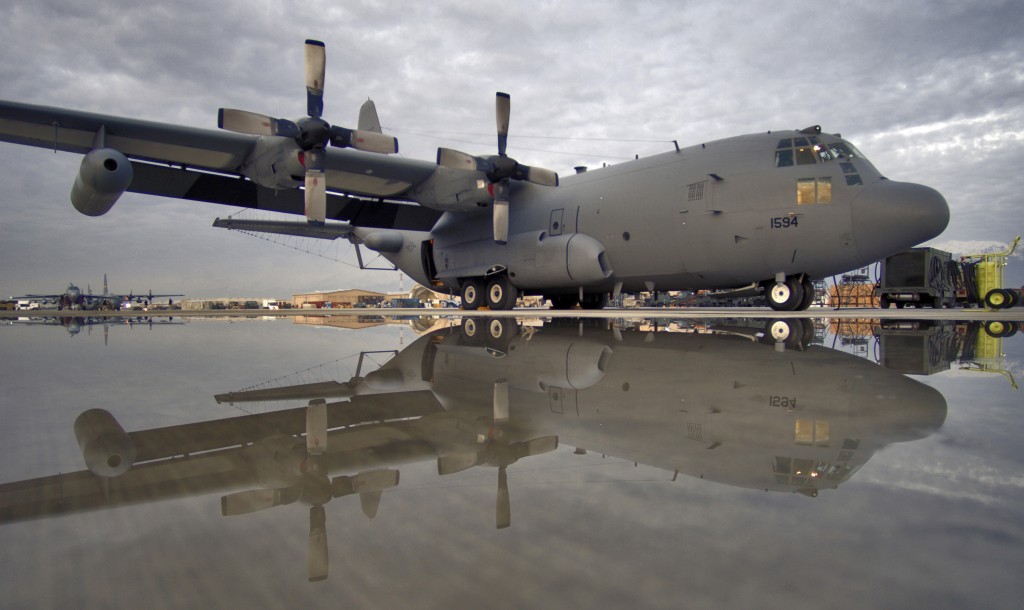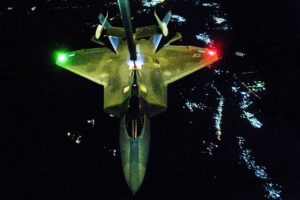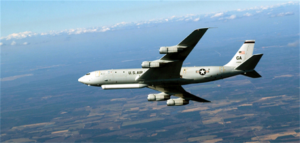Change How Air Force Buys Compass Call, JSTARS
Posted on

An Air Force EC-130H Compass Call electronic warfare aircraft in Afghanistan.
The 21st century is defined by connectivity, from our iPhones to the networks that power our economy. The US military is not immune to this. Either it seizes opportunities presented by the information age, or risks precipitating problems if it retreats into anachronistic paradigms.
Well into the late 20th century, combat power was largely measured by the number of airplanes, ships, tanks and satellites a nation could muster. While industrial means of military power remain important today, future success or failure will be governed by the way information is harnessed to project power at the right time, in the right place, with the optimal set of military forces. The traditional boundaries segregating air, space, sea, and cyber will increasingly disappear as assets in these respective venues collaboratively engage to achieve a desired effect–a concept labeled as the “Combat Cloud.”
The maturation and proliferation of Remotely Piloted Aircraft (RPA) (what Breaking Defense calls drones) and their command and control systems demonstrate the implications of this shift. Soldiers on the ground can view sensor data from an RPA overhead and identify coordinates for strikes. Munitions can be launched from the RPA itself, other aircraft, or standoff weapons from a ship at sea. The power of such a system is not measured by its individual parts, but the collaborative enterprise as a whole—with the exchange of information its backbone.

F-22 refuels during attacks on ISIL
Growing these capabilities into a powerful, resilient, and adaptable combat cloud comes down to prudent planning. Military leaders need to define concepts of operation, technical standards, and necessary doctrine, etc. to facilitate the maturation of this enterprise. This also means procurement processes must be carefully managed to prioritize information age advantages over industrial age concepts. Too often we hear stories of systems like the F-22 Raptor, where short-sighted acquisition decisions drove budget cuts yielding a data link unable to connect with other systems. Program managers at the time rationalized the decision, saying the aircraft was fighter plane and that a data link external to F-22 operations was of secondary concern.
Anyone with a vague understanding of aerial combat knows mission success comes down to understanding when and where to project power—situational awareness. This truth is what enabled the Royal Air Force to secure victory in the Battle of Britain—radar and observer networks informed a command and control system to successfully direct a small number of fighters against greater numbers of German forces. Fast-forward over 75 years later—the F-22 today can’t automatically share the vast array of data it collects through its powerful sensors with other systems except the Raptor. The importance of this mission is highlighted by F-22 use over Syria. It is predominately valued as an information asset to provide situational awareness for the rest of the force. However, lacking data link to external nodes, pilots have to relay information by voice over radio—not much different from the days of the Battle of Britain.
Given the acclaim for drones as the leading example of the emerging combat cloud, one would hope that the Air Force is prioritizing information age acquisition strategies. The answer is: sort of.
While the B-21 and F-35 are designed as part of a broader collaborative enterprise, this approach is not uniform. A prime case in point lies with the Air Force’s EC-130H Compass Call recapitalization effort.
Compass Call disrupts enemy command and control efforts and is a critical enabler of projecting effective power in the information age. By denying and disrupting an adversary’s ability to employ combat assets in a coordinated, coherent fashion, US forces can deny the capability of vast portions of an opposing force. In many ways, this is just as powerful as destroying a target— the asset’s combat potential is negated in either case.
But the Air Force is imposing highly restrictive sourcing requirements on the program, restrictions that reflect industrial age platform-centric thinking versus an information-age enterprise approach. Pursuing a forward leaning, open competition for a program like Compass Call would help ensure the service acquires a system optimized to operate in the information age.
New ideas can be generated by competing requirements across a variety of actors; tradeoffs can be addressed holistically; and enterprise-wide interoperability given due priority. To put it simply, focusing on replacing a platform in a linear fashion misses the point. Buying “things” is not the overarching goal. Instead, we need to focus on desired mission effects and be open to the idea that there may be new, better ways of attaining those objectives. Given budget pressures facing the Air Force over the next several years, the consequences of limiting competition could be significant. The service could lack the funding to pursue alternate options should a sole-source selection sub-optimize enterprise capabilities necessary to prevail in modern combat.

JSTARS
This challenge is not isolated to Compass Call. The Air Force is slated to recapitalize the capability to track moving ground targets from the air currently resident in its E-8 JSTARS aircraft. It must also consider eventual replacement of the capabilities that are provided by the other geriatric Boeing 707-based assets like the E-3 AWACS aerial battle management and command and control aircraft; the RC-135 Rivet Joint signals intelligence aircraft; and the WC-135 Constant Phoenix nuclear measurement and signatures detection platform—flown to collect samples after nuclear events such as a bomb test.
The capabilities these aircraft provide play a vital role in empowering an information-age military. However, we need to realize that technologies no longer require one aircraft type to replace an older version. The world has moved past this linear form of thinking. Today, missions can be executed in a much more robust, redundant, and distributed fashion through interconnected systems. If we are going to capitalize on what modern technologies enable, we have to shed legacy concepts of operation and acquisition to actualize the potential of the information age. Old assumptions need to be challenged, new technologies need to be explored, and a focus on desired capabilities versus one-for-one replacement of aircraft needs to be embraced.
Doug Birkey is executive director of the Mitchell Institute for Aerospace Power Studies, an affiliate of the non-partisan Air Force Association.
Subscribe to our newsletter
Promotions, new products and sales. Directly to your inbox.
